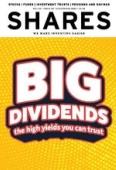Archived article
Please note that tax, investment, pension and ISA rules can change and the information and any views contained in this article may now be inaccurate.
Why have bond yields suddenly soared and what does it mean for investors?

If anyone thought financial markets were efficient at pricing in all available news and views, the experience of the last few weeks should have shown them they are anything but.
For months the US Federal Reserve has been repeating the mantra that interest rates would need to stay ‘higher for longer’ to tame inflation, yet equity and bond investors chose to ignore the message.
The penny – or dime – finally seemed to drop with US equity investors last month, causing the S&P 500 index to shed 4% of its value and confirming September’s reputation as a rotten month for stocks.
However, until recently, bond investors seemed to be blithely unwilling to heed the central banks’ warnings that the era of low interest rates is well and truly over.
Now, UK long-bond yields are hitting their highest level in a quarter of a century as a global debt market sell-off gathers pace (the yield is the inverse of the price, so yields fall as prices rise and vice versa).
The yield on the 30-year gilt or UK government bond touched 5.1% at the beginning of October, the highest since September 1998 and above the peak reached during the panic sell-off in late 2022 caused by the disastrous ‘mini-budget’. Yields on US government bonds are at levels last seen in 2007.
Adding to the selling pressure is the fact central banks are increasing their sales of bonds over the coming year as a way to reduce their balance sheets, which ballooned during the pandemic as governments everywhere splurged on stimulus measures to keep the global economy from grinding to a halt.
Soaring government debt and interest bills are a key factor behind the ‘bond market blitz’ of recent days, says AJ investment director Russ Mould.
‘The UK’s government debt has surged past the £2.5 trillion mark, and the Office for Budget Responsibility reckons the annual interest bill will be £115 billion – the only government department that will cost more is the NHS,’ says Mould.
Why does this matter for investors? Clearly for investors in bonds, and any bond-like, long-duration assets such as infrastructure and renewable energy, higher yields mean lower prices.
For equity investors, an increase in the risk-free rate – which is generally considered as the yield on 10-year gilts or US treasuries – makes shares, which are typically riskier than bonds, a less attractive place to put their money.
When interest rates were at rock bottom, a commonly-used acronym to justify buying shares was TINA, or There Is No Alternative.
Now, says Mould, there is a new acronym in town - TIARA, or There Is A Real Alternative to equities, in the form of cash.
DISCLAIMER: Financial services company AJ Bell referenced in this article owns Shares magazine. The author of this article (Ian Conway) and the editor (Tom Sieber) own shares in AJ Bell.
Important information:
These articles are provided by Shares magazine which is published by AJ Bell Media, a part of AJ Bell. Shares is not written by AJ Bell.
Shares is provided for your general information and use and is not a personal recommendation to invest. It is not intended to be relied upon by you in making or not making any investment decisions. The investments referred to in these articles will not be suitable for all investors. If in doubt please seek appropriate independent financial advice.
Investors acting on the information in these articles do so at their own risk and AJ Bell Media and its staff do not accept liability for losses suffered by investors as a result of their investment decisions.
Issue contents
Feature
Great Ideas
News
- Tesla deliveries miss in third quarter and pose the risk of lower margins
- Weak retail figures and Bank of England gloom dial down rates pressure
- Markets buffeted by strong US job gains and Israel attacks
- Hunting lifted by higher oil prices and inspiring long-term vision for business
- VinFast stock’s rapid rise matched by equally fast falls
 magazine
magazine








